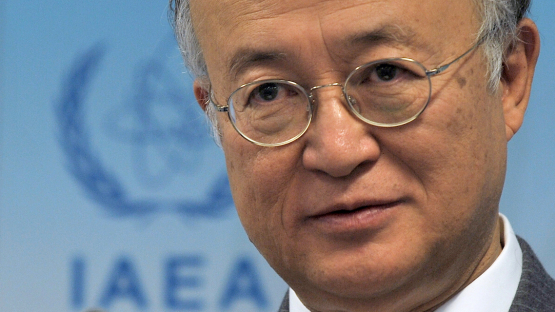An International Atomic Energy Agency (IAEA) team of experts said
Hungary has made significant improvements to its regulatory framework
for nuclear and radiation safety since 2015.
The Integrated Regulatory Review Service (IRRS) team concluded on 1 October an eight-day follow-up mission to review Hungary’s implementation of recommendations and suggestions made during a 2015 visit. The mission was conducted at the request of the Government of Hungary and hosted by the Hungarian Atomic Energy Authority (HAEA), in coordination with the Office of the Chief Medical Officer and the Baranya County Government Office.
IRRS missions are designed to strengthen the effectiveness of the national nuclear regulatory infrastructure, using IAEA safety standards and international good practices, while recognizing the responsibility of each country to ensure nuclear and radiation safety.
Hungary generates half its electricity at four reactors at the Paks Nuclear Power Plant, located 130 km south of the capital, Budapest. Hungary is planning to build another two reactors at Paks, and operates two research reactors for training and research as well as isotope production.
The scope of the 2015 and the 2018 IRRS missions covered all regulated facilities and activities.
The IRRS team observed that Hungary has been successful in addressing the findings identified during the 2015 mission related to the complex distribution of regulatory responsibilities.
"Hungary has gone through a significant transition during which they were successful in addressing many of the recommendations and suggestions identified during the initial mission,” said team leader Michael Johnson, Deputy Executive Director for Reactor and Preparedness Programs at the United States Nuclear Regulatory Commission. "While additional work remains to ensure effective implementation, Hungary has demonstrated its dedication to continuous improvement and focus on safety.”
The team found that since 2015, the HAEA has taken positive steps to, among others:
“The mission demonstrated that Hungary continues to place appropriate focus on implementing a framework that provides for effective protection of public health and safety,” said Greg Rzentkowski, Director, Division of Nuclear Installation Safety. “The progress achieved to date significantly enhanced regulatory effectiveness and transparency.”
The 11-member IRRS team comprised senior regulatory experts from Finland, France, Greece, Pakistan, Slovenia, the United States as well as four IAEA staff members.
The final mission report will be provided to the Government in about three months. The Government plans to make the report public.
The Integrated Regulatory Review Service (IRRS) team concluded on 1 October an eight-day follow-up mission to review Hungary’s implementation of recommendations and suggestions made during a 2015 visit. The mission was conducted at the request of the Government of Hungary and hosted by the Hungarian Atomic Energy Authority (HAEA), in coordination with the Office of the Chief Medical Officer and the Baranya County Government Office.
IRRS missions are designed to strengthen the effectiveness of the national nuclear regulatory infrastructure, using IAEA safety standards and international good practices, while recognizing the responsibility of each country to ensure nuclear and radiation safety.
Hungary generates half its electricity at four reactors at the Paks Nuclear Power Plant, located 130 km south of the capital, Budapest. Hungary is planning to build another two reactors at Paks, and operates two research reactors for training and research as well as isotope production.
The scope of the 2015 and the 2018 IRRS missions covered all regulated facilities and activities.
The IRRS team observed that Hungary has been successful in addressing the findings identified during the 2015 mission related to the complex distribution of regulatory responsibilities.
"Hungary has gone through a significant transition during which they were successful in addressing many of the recommendations and suggestions identified during the initial mission,” said team leader Michael Johnson, Deputy Executive Director for Reactor and Preparedness Programs at the United States Nuclear Regulatory Commission. "While additional work remains to ensure effective implementation, Hungary has demonstrated its dedication to continuous improvement and focus on safety.”
The team found that since 2015, the HAEA has taken positive steps to, among others:
- Ensure the effective independence of the regulatory body
- Simplify the distribution of roles and responsibilities of the different regulatory authorities
- Maintain regulatory stability and ensure effective knowledge transfer throughout the redistribution of regulatory responsibilities
“The mission demonstrated that Hungary continues to place appropriate focus on implementing a framework that provides for effective protection of public health and safety,” said Greg Rzentkowski, Director, Division of Nuclear Installation Safety. “The progress achieved to date significantly enhanced regulatory effectiveness and transparency.”
The 11-member IRRS team comprised senior regulatory experts from Finland, France, Greece, Pakistan, Slovenia, the United States as well as four IAEA staff members.
The final mission report will be provided to the Government in about three months. The Government plans to make the report public.











